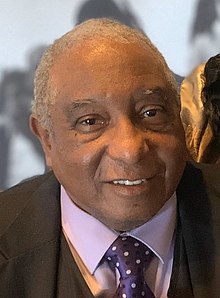Childhood
Lafayette was born and raised in Tampa, Florida. His parents were Bernard Lafayette Sr. and Verdell Lafayette. Bernard was the eldest of eight children. His siblings were Harold Rozelia, Brenda, Geri, Michael, and Victoria. [2] Lafayette spent much of his childhood in Tampa. His family grew up poor, so Bernard started working odd jobs to gain more income by the age of 11. [2] His jobs included cashiering, meat cutting, delivering produce, and collecting change at a coffee shop. [2] When reminiscing on his childhood, Bernard says: "I had to grow up rapidly. In other words, I didn't have a childhood." [3]
Despite being Black in the south, Lafayette says he initially attended an integrated elementary school, and eventually began to go to schools that were still segregated. While he was at the integrated school he says that "even though it wasn't segregated, I could still see the contrast between the two worlds." [3] Bernard has clear recollections of some of the racism that he experienced at a young age. When Bernard was seven years old, he was heading downtown with his grandmother, Ma Foster, so they decided to catch a cable car. One of the segregation laws regarding cable cars was that Black people would pay at the front door, and then enter through the back door. When his grandmother paid the cable car driver, the driver started driving before either of them could board, pocketing their money and leaving them stranded. [4] Lafayette says that this was one of the first instances where he realized that he wanted to do something about how African Americans were being treated.
Early adult life and career
Bernard was married to Kate Bulls Lafayette in 1969. He had two children with his previous wife Colia Liddell Lafayette: Bernard Lafayette III and James Lafayette Sr. According to his children, Bernard was a loving father, who never yelled at, was stern with, or even expressed anger towards his wife or his kids. The family had a very tight-knit relationship, and spent tons of time together. James became an ordained preacher (influenced by his father, who was a religious man), and Lafayette III attended American Baptist College. [2]
As a young man at the age of twenty, Lafayette moved to Nashville, Tennessee, and enrolled in the American Baptist Theological Seminary. During the course of his freshman year, he took classes in nonviolence at the Highlander Folk School run by Myles Horton, and attended many meetings promoting nonviolence. He learned more about the philosophy of nonviolence as lived by Mohandas Gandhi, while taking seminars from activist James Lawson, a well-known nonviolent representative of the Fellowship of Reconciliation.
Lafayette began to use the nonviolent techniques as he became more exposed to the strong racial injustice of the South. In 1959, he, along with his friends Diane Nash, James Bevel, and John Lewis, all members of the Nashville Student Movement, led sit-ins, such as the 1960 Lunch Counter Sit-In, at restaurants and businesses that practiced segregation. As an advocate of nonviolence, in 1960 Lafayette assisted in the formation of the Student Nonviolent Coordinating Committee (SNCC).
Freedom Rides
In 1961, the Congress of Racial Equality (CORE) initiated a movement to enforce federal integration laws on interstate bus routes. This movement, known as the Freedom Rides, had African American and white volunteers ride together on bus routes through the segregated South. Lafayette wanted to participate, but his parents forbade him. After the Freedom Riders were violently attacked in the city of Anniston, Alabama, the Nashville Student Movement, of which Lafayette was a member, vowed to take over the journey. At the time, some civil rights leaders worried that the Freedom Rides were too provocative and would damage the movement. Despite many doubts, these Nashville students were determined to finish the job.
In May 1961, in the city of Montgomery, Alabama, Lafayette and the other riders were "greeted" at the bus terminal by an angry white mob, members of Ku Klux Klan chapters, and were viciously attacked. The Freedom Riders were brutally beaten. Their attackers carried every makeshift weapon imaginable: baseball bats, wooden boards, bricks, chains, tire irons, pipes, and even garden tools. [5]
During the Montgomery attack, Lafayette stood firm; his fellow riders William Barbee and John Lewis were beaten until they fell unconscious. Lafayette, Fred Leonard and Allen Cason narrowly escaped being killed by jumping over a wall and running to the post office. Everyone inside was carrying on individual business, just like nothing was happening outside. [5] Lafayette later stated, " I thought they were shooting Freedom Riders." It was the gunshot of Alabama's Director of Public Safety, Floyd Mann, who was fighting for the protection of the Freedom Riders.
Lafayette with other Riders was arrested in Jackson, Mississippi, and jailed at Parchman State Prison Farm during June 1961. [6] During Lafayette's participation in civil rights activities, he was beaten and arrested 27 times. [7] [8]
Life after Selma
Lafayette went on to work on the 1966 Chicago Open Housing Movement (he had worked in Chicago earlier with Kale Williams, Bill Moyer, David Jehnsen and other leaders of the American Friends Service Committee). He later became ordained as a Baptist minister and served as president of the American Baptist Theological Seminary. [11]
In 1973, Lafayette was named first director of the Peace Education Program at Gustavus Adolphus College, Saint Peter, Minnesota. The Gustavus program enabled Lafayette to infuse the entire curriculum of the college with peace education. Lafayette served this Lutheran liberal arts college for nearly three years. He was also the dean of the graduate school at Alabama State University. [12]
Lafayette has been recognized as a major authority on strategies for nonviolent social change. [13] He is also recognized as one of the leading exponents of nonviolent direct action in the world. [14]
He was a Senior Fellow at the University of Rhode Island, [15] where he helped to found the Center for Nonviolence and Peace Studies. The Center promotes nonviolence education using a curriculum based on the principles and methods of Martin Luther King Jr. [16] He is a Distinguished Scholar-in-Residence at the Candler School of Theology, at Emory University in Atlanta, Georgia. [17] He currently serves as scholar-in-residence at the Caroline Marshall Draughon Center for the Arts & Humanities in the College of Liberal Arts at Auburn University. [18]
Lafayette was honored as a Doctor of Humane Letters from Mount Holyoke College, in May 2012. In 2014, The University of Rhode Island honored LaFayette with an honorary doctorate in recognition of his lifetime nonviolence leadership for civil and human rights. In 2015, he received an honorary degree and was the principal speaker at the graduation of St. Michael's College in Colchester, Vermont. In 2019 he was awarded the Coretta Scott King Legacy Award by Antioch College's Coretta Scott King Center for Cultural and Intellectual Freedom.
Following Selma, Bernard went on to write several books about his experiences in the civil rights movement and books covering his views and thoughts on nonviolence. These books include The Leaders Manual: A Structured Guide and Introduction to Kingian Nonviolence, [19] The Briefing Booklet: An Orientation to the Kingian Nonviolence Conflict Reconciliation Program, [20] and In Peace and Freedom: My Journey in Selma. [4] His oral history is included in the 2006 book Generation on Fire: Voices of Protest from the 1960s by Jeff Kisseloff. [21]

The civil rights movement was a social movement and campaign in the United States from 1954 to 1968 that aimed to abolish legalized racial segregation, discrimination, and disenfranchisement in the country, which was most commonly employed against African Americans. The movement had origins in the Reconstruction era during the late 19th century, and had modern roots in the 1940s. After years of direct actions and grassroots protests, the movement made its largest legislative and judicial gains during the 1960s. The movement's major nonviolent resistance and civil disobedience campaigns eventually secured new protections in federal law for the civil rights of all Americans.

The Student Nonviolent Coordinating Committee, and later, the Student National Coordinating Committee was the principal channel of student commitment in the United States to the civil rights movement during the 1960s. Emerging in 1960 from the student-led sit-ins at segregated lunch counters in Greensboro, North Carolina, and Nashville, Tennessee, the Committee sought to coordinate and assist direct-action challenges to the civic segregation and political exclusion of African Americans. From 1962, with the support of the Voter Education Project, SNCC committed to the registration and mobilization of black voters in the Deep South. Affiliates such as the Mississippi Freedom Democratic Party and the Lowndes County Freedom Organization in Alabama also worked to increase the pressure on federal and state government to enforce constitutional protections.

James Morris Lawson Jr. was an American activist and university professor. He was a leading theoretician and tactician of nonviolence within the Civil Rights Movement. During the 1960s, he served as a mentor to the Nashville Student Movement and the Student Nonviolent Coordinating Committee. He was expelled from Vanderbilt University for his civil rights activism in 1960, and later served as a pastor in Los Angeles for 25 years.

The Southern Christian Leadership Conference (SCLC) is an African-American civil rights organization based in Atlanta, Georgia. SCLC is closely associated with its first president, Martin Luther King Jr., who had a large role in the American civil rights movement.
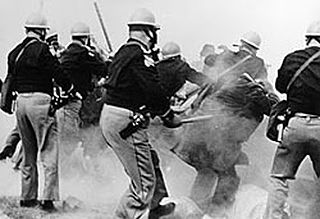
The Selma to Montgomery marches were three protest marches, held in 1965, along the 54-mile (87 km) highway from Selma, Alabama, to the state capital of Montgomery. The marches were organized by nonviolent activists to demonstrate the desire of African-American citizens to exercise their constitutional right to vote, in defiance of segregationist repression; they were part of a broader voting rights movement underway in Selma and throughout the American South. By highlighting racial injustice, they contributed to passage that year of the Voting Rights Act, a landmark federal achievement of the civil rights movement.
James Forman was a prominent African-American leader in the civil rights movement. He was active in the Student Nonviolent Coordinating Committee (SNCC), the Black Panther Party, and the League of Revolutionary Black Workers. As the executive secretary of SNCC from 1961 to 1966, Forman played a significant role in the Freedom Rides, the Albany movement, the Birmingham campaign, and the Selma to Montgomery marches.
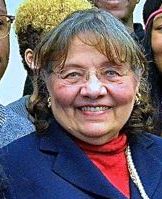
Diane Judith Nash is an American civil rights activist, and a leader and strategist of the student wing of the Civil Rights Movement.

The Big Six—Martin Luther King Jr., James Farmer, John Lewis, A. Philip Randolph, Roy Wilkins and Whitney Young—were the leaders of six prominent civil rights organizations who were instrumental in the organization of the March on Washington for Jobs and Freedom in 1963, at the height of the Civil Rights Movement in the United States.
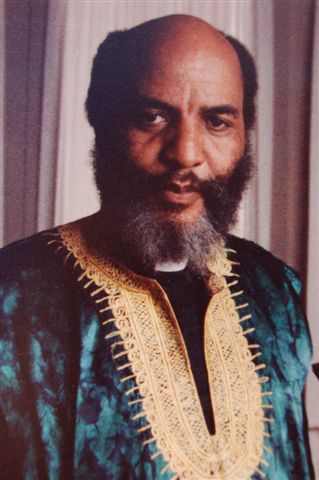
James Luther Bevel was an American minister, leader of the 1960s Civil Rights Movement in the United States, and convicted child molester. As a member of the Southern Christian Leadership Conference (SCLC), and then as its director of direct action and nonviolent education, Bevel initiated, strategized, and developed SCLC's three major successes of the era: the 1963 Birmingham Children's Crusade, the 1965 Selma voting rights movement, and the 1966 Chicago open housing movement. He suggested that SCLC call for and join a March on Washington in 1963 and strategized the 1965 Selma to Montgomery marches which contributed to Congressional passage of the 1965 Voting Rights Act.

Cordy Tindell Vivian was an American minister, author, and close friend and lieutenant of Martin Luther King Jr. during the civil rights movement. He resided in Atlanta, Georgia, and founded the C. T. Vivian Leadership Institute, Inc. He was a member of the Alpha Phi Alpha fraternity.
Colia L. Liddell Lafayette Clark was an American activist and politician. Clark was the Green Party's candidate for the United States Senate in New York in 2010 and 2012.
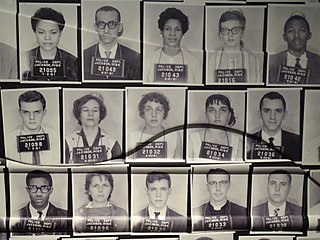
Freedom Riders were civil rights activists who rode interstate buses into the segregated Southern United States in 1961 and subsequent years to challenge the non-enforcement of the United States Supreme Court decisions Morgan v. Virginia (1946) and Boynton v. Virginia (1960), which ruled that segregated public buses were unconstitutional. The Southern states had ignored the rulings and the federal government did nothing to enforce them. The first Freedom Ride left Washington, D.C., on May 4, 1961, and was scheduled to arrive in New Orleans on May 17.
Prathia Laura Ann Hall Wynn was an American leader and activist in the Civil Rights Movement, a womanist theologian, and ethicist. She was the key inspiration for Martin Luther King Jr.'s "I Have a Dream" speech.

Charles Melvin Sherrod was an American minister and civil rights activist. During the civil rights movement, Sherrod helped found the Albany Movement while serving as field secretary for southwest Georgia for the Student Nonviolent Coordinating Committee. He also participated in the Selma Voting Rights Movement and in many other campaigns of the civil rights movement of that era.

The Nashville Student Movement was an organization that challenged racial segregation in Nashville, Tennessee, during the Civil Rights Movement. It was created during workshops in nonviolence taught by James Lawson at the Clark Memorial United Methodist Church. The students from this organization initiated the Nashville sit-ins in 1960. They were regarded as the most disciplined and effective of the student movement participants during 1960. The Nashville Student Movement was key in establishing leadership in the Freedom Riders.

Samuel Leamon Younge Jr. was a civil rights and voting rights activist who was murdered for trying to desegregate a "whites only" restroom. Younge was an enlisted service member in the United States Navy, where he served for two years before being medically discharged. Younge was an active member of the Student Nonviolent Coordinating Committee (SNCC) and a leader of the Tuskegee Institute Advancement League.
This is a timeline of the civil rights movement in the United States, a nonviolent mid-20th century freedom movement to gain legal equality and the enforcement of constitutional rights for people of color. The goals of the movement included securing equal protection under the law, ending legally institutionalized racial discrimination, and gaining equal access to public facilities, education reform, fair housing, and the ability to vote.
The Dallas County Voters League (DCVL) was a local organization in Dallas County, Alabama, which contains the city of Selma, that sought to register black voters during the late 1950s and early 1960s.
Rodney Norman Powell. is a former civil rights leader in the Nashville Student Movement and an activist for LGBTQ rights.

John Robert Zellner is an American civil rights activist. He graduated from Huntingdon College in 1961 and that year became a member of the Student Nonviolent Coordinating Committee (SNCC) as its first white field secretary. Zellner was involved in numerous civil rights efforts, including nonviolence workshops at Talladega College, protests for integration in Danville, Virginia, and organizing Freedom Schools in Greenwood, Mississippi, in 1964. He also investigated the murders of Chaney, Goodman, and Schwerner that summer.
